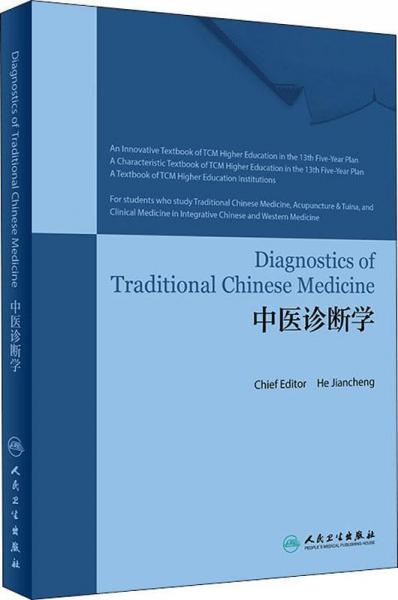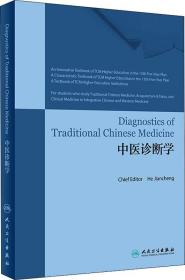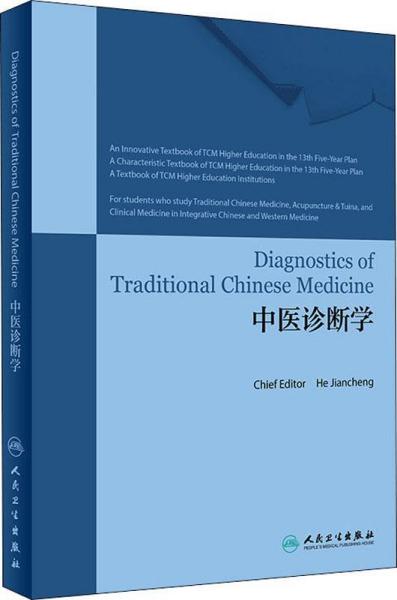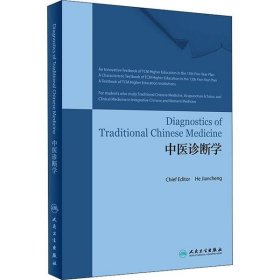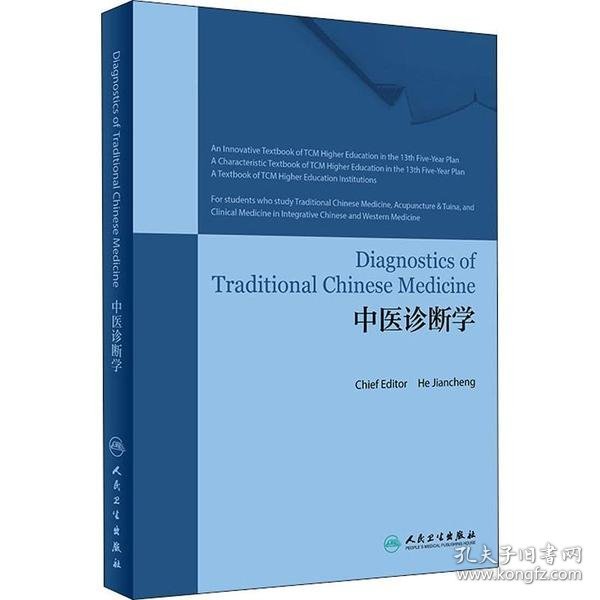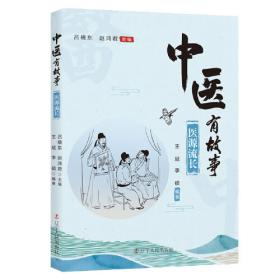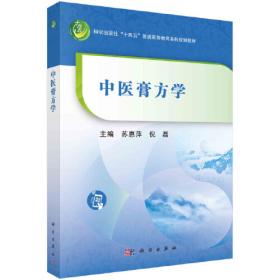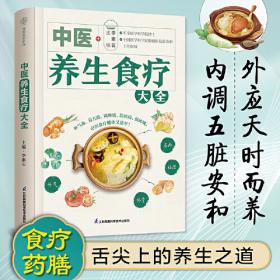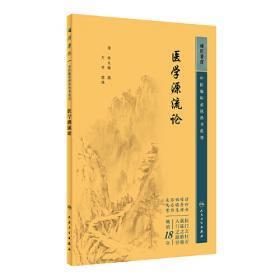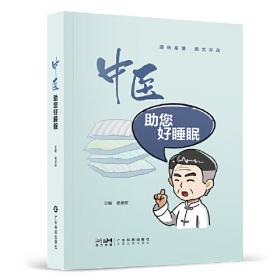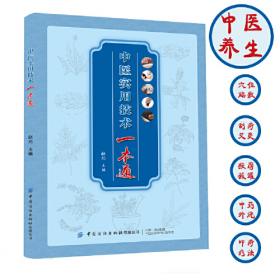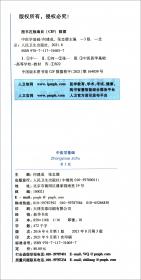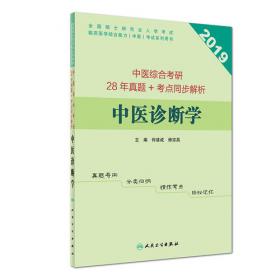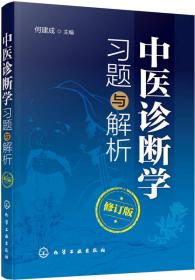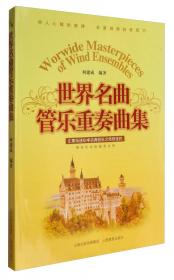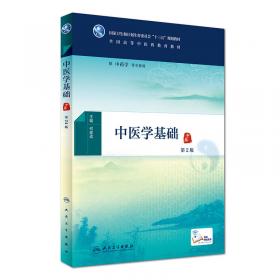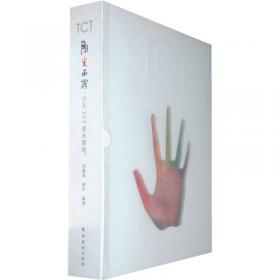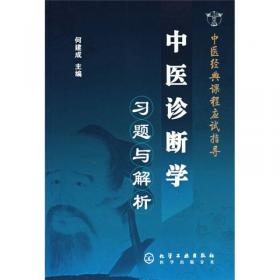中医诊断学
出版时间:
2019-02
版次:
1
ISBN:
9787117275712
定价:
98.00
装帧:
平装
开本:
其他
字数:
658千字
14人买过
-
上海中医药大学是靠前很早开办开办留学生教育的高等中医药院校之一;该校在靠前学术交流、文化传播以及留学生的规模等方面呈现出日益增长的势头。该教材主要对中医诊断学的内容、术语等进行梳理、规范,并作出合理取舍和注入内涵,全书采用中英双语编写,文字精炼,图文并茂,动漫结合,适用于国外留学生和境外中医药爱好者阅读使用。
Introduction
Main contents ofDiagnostics ofChinese Medicine
The origin and development ofDiagnostics ofChinese Medicine
Essential principles in the diagnosis ofChinese medicine
Basic methods in the diagnosis of Chinese medicine
Methods&requirements in learning Diagnostics ofChinese Mercine
Part A Diagnostic Methods
Chapter 1 I nspection
Section 1 Overall Inspection of the Body
Inspection ofthe spirit
Inspection ofthe color and luster
Inspection ofthe body build
Inspection ofthe body posture/movement
Section 2 Inspection of Local Body Parts
Inspection ofthe head and face
Inspection ofthe five sense organs
Inspection ofthe neck and nape
Inspection ofthe chest and rib area
Inspection ofthe abdomen
Inspection ofthe back and low back(waist)
Inspection ofthe four limbs
Inspection of external genitalia.urethra and anus
Inspection ofthe skin
Inspection ofindex fingers in small children
Section 3 Tongue Diagnosis
Structure of the tongue and manifestations of tongue body and coating
Principles oftongue diagnosis
Method and cautions oftongue diagnosis
Normal tongue and physiological variations
Comems oftongue diagnosis
Key points in tongue diagnosis
Clinical significances ofthe tongue diagnosis
Diagnosis of critical tongue manifestations
Section 4 Inspection of lhe Excreta
Inspection of the sputum,thin saliva,snivel and thick saliva
Inspection ofthe vomitus
Inspection ofthe feces & urine
Chapter 2 AuscuItation and Olfaction
Section 1 Listening to Voice/Sound
Normal voice/sound
Abnormal vOices/sOunds
Section 2 Smelling to 0dor
Odors related to patients’bodv and excreta
0dors related to the ward
Chapter 3 Inquiry
Section 1 Significance and Methods of Inquiry
Significance of inquiry
Methods of inquiry
Cautionary notes in inquiry
Section 2 Contents of Inquiry
General information
Chief complaints
History ofthe present illness
Past medical history
Personal life history
Family history
Section 3 Inquiry of Present Symptoms
Inquiry ofchills/fever
Inquiry ofperspiration
Inquiry ofpain
Inquiry of discomfort in the head,body,chest and abdomen
Inquiry of diet and taste
Inquiry of sleep
Inquiry ofbladder and bowel movemems
Chapter 4 Pulse Feeling and Palpation
……
Part B Syndrome Differentiation
Chapter 5 Syndrome Differentiation of the Eigh
Principles
Chapter 6 Syndrome Differentiation of the
Etiological Factors
Chapter 7 Syndrome Differentiation of the
Disease Nature
Chapter 8 Syndrome Differentiation of the
Disease Location
Part C Comprehensive Application of
Diagnosis and Medical Record
Chapter 9 Comprehensive Application of
Diagnosis
Chapter 10 Medical Record Writing and lts
Requirements
Appendix:Spe Diagnostic Methods
Chapter 11Selected Introductions of Spel
and Differential Diagnosis
Diagnostic Methods
Chapter 12 Differential Diagnosis for
Common Symptoms
References
-
内容简介:
上海中医药大学是靠前很早开办开办留学生教育的高等中医药院校之一;该校在靠前学术交流、文化传播以及留学生的规模等方面呈现出日益增长的势头。该教材主要对中医诊断学的内容、术语等进行梳理、规范,并作出合理取舍和注入内涵,全书采用中英双语编写,文字精炼,图文并茂,动漫结合,适用于国外留学生和境外中医药爱好者阅读使用。
-
目录:
Introduction
Main contents ofDiagnostics ofChinese Medicine
The origin and development ofDiagnostics ofChinese Medicine
Essential principles in the diagnosis ofChinese medicine
Basic methods in the diagnosis of Chinese medicine
Methods&requirements in learning Diagnostics ofChinese Mercine
Part A Diagnostic Methods
Chapter 1 I nspection
Section 1 Overall Inspection of the Body
Inspection ofthe spirit
Inspection ofthe color and luster
Inspection ofthe body build
Inspection ofthe body posture/movement
Section 2 Inspection of Local Body Parts
Inspection ofthe head and face
Inspection ofthe five sense organs
Inspection ofthe neck and nape
Inspection ofthe chest and rib area
Inspection ofthe abdomen
Inspection ofthe back and low back(waist)
Inspection ofthe four limbs
Inspection of external genitalia.urethra and anus
Inspection ofthe skin
Inspection ofindex fingers in small children
Section 3 Tongue Diagnosis
Structure of the tongue and manifestations of tongue body and coating
Principles oftongue diagnosis
Method and cautions oftongue diagnosis
Normal tongue and physiological variations
Comems oftongue diagnosis
Key points in tongue diagnosis
Clinical significances ofthe tongue diagnosis
Diagnosis of critical tongue manifestations
Section 4 Inspection of lhe Excreta
Inspection of the sputum,thin saliva,snivel and thick saliva
Inspection ofthe vomitus
Inspection ofthe feces & urine
Chapter 2 AuscuItation and Olfaction
Section 1 Listening to Voice/Sound
Normal voice/sound
Abnormal vOices/sOunds
Section 2 Smelling to 0dor
Odors related to patients’bodv and excreta
0dors related to the ward
Chapter 3 Inquiry
Section 1 Significance and Methods of Inquiry
Significance of inquiry
Methods of inquiry
Cautionary notes in inquiry
Section 2 Contents of Inquiry
General information
Chief complaints
History ofthe present illness
Past medical history
Personal life history
Family history
Section 3 Inquiry of Present Symptoms
Inquiry ofchills/fever
Inquiry ofperspiration
Inquiry ofpain
Inquiry of discomfort in the head,body,chest and abdomen
Inquiry of diet and taste
Inquiry of sleep
Inquiry ofbladder and bowel movemems
Chapter 4 Pulse Feeling and Palpation
……
Part B Syndrome Differentiation
Chapter 5 Syndrome Differentiation of the Eigh
Principles
Chapter 6 Syndrome Differentiation of the
Etiological Factors
Chapter 7 Syndrome Differentiation of the
Disease Nature
Chapter 8 Syndrome Differentiation of the
Disease Location
Part C Comprehensive Application of
Diagnosis and Medical Record
Chapter 9 Comprehensive Application of
Diagnosis
Chapter 10 Medical Record Writing and lts
Requirements
Appendix:Spe Diagnostic Methods
Chapter 11Selected Introductions of Spel
and Differential Diagnosis
Diagnostic Methods
Chapter 12 Differential Diagnosis for
Common Symptoms
References
查看详情
-
全新
河北省保定市
平均发货27小时
成功完成率90.44%
-
全新
河北省保定市
平均发货27小时
成功完成率87.47%
-
全新
河北省保定市
平均发货18小时
成功完成率89.88%
-
全新
河北省保定市
平均发货18小时
成功完成率82.58%
-
全新
河北省保定市
平均发货28小时
成功完成率92.03%
-
全新
河北省保定市
平均发货33小时
成功完成率82.24%
-
全新
北京市房山区
平均发货27小时
成功完成率88.32%
-
全新
北京市丰台区
平均发货14小时
成功完成率83.36%
-
全新
四川省成都市
平均发货31小时
成功完成率83.98%

 占位居中
占位居中

